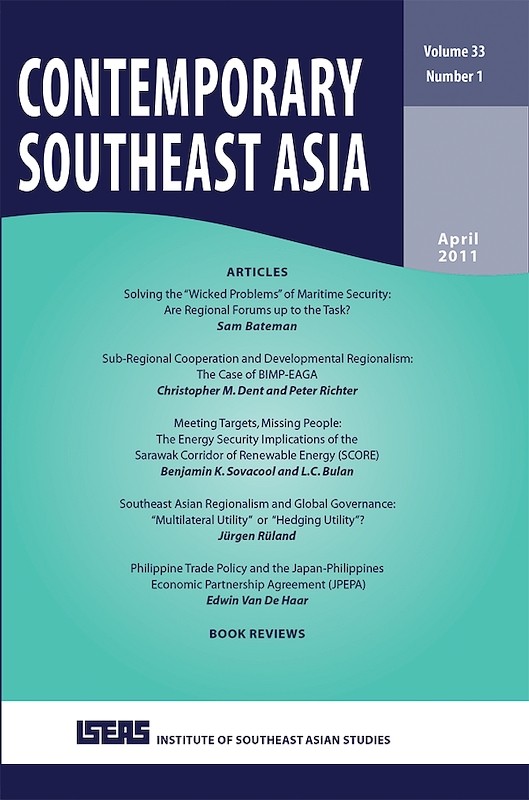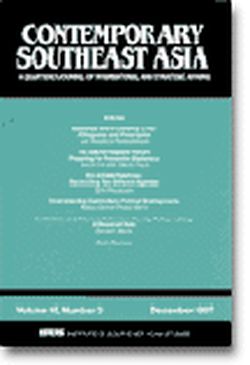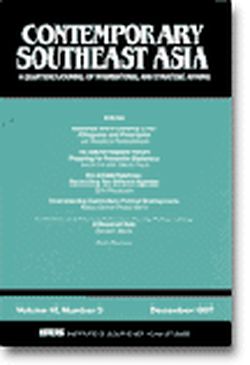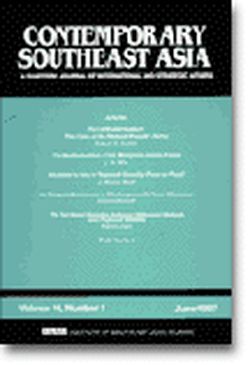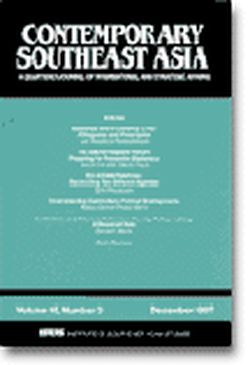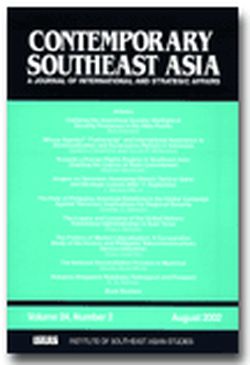Contemporary Southeast Asia: A Journal of International and Strategic Affairs Vol. 12/2 (Sept 1990)

Date of publication:
September 1990
Number of pages:
78
Code:
CS12/2
Contents
-
Preliminary pages
- ARTICLES
-
The United States and Conflict Reduction in Southeast Asia, by Sheldon W Simon, author see abstractThe end of the cold war in Asia requires a new rationale for the maintenance of reduced forward deployed American air and naval forces. For Southeast Asia, a continued U.S. military presence is seen as contributing to the preservation of a climate of international stability conducive to business investment and economic growth. No ASEAN member desires a precipitous U.S. withdrawal which, it is feared, would lead to new force projections by Japan, China, and possibly India to assert their interests in the region. The ASEAN states, too, would have to increase their own air and naval deployments more rapidly than would be necessary if the Americans remain on the scene. Rather, they would prefer a gradual reduction in U.S. forces over the next decade in tandem with the region's creation of a new political order able to see to its own security.
-
China's Strategic View of Southeast Asia: A Region in Transition, by Robert S. Ross, author see abstractAs China evaluates its strategic situation in Southeast Asia, it perceives the region in transition. China welcomes the decline of the cold war and of Soviet power in the region, and its policy towards Indochina and other countries reflects this change. The decline of the old order is the source of the contemporary near universal focus on economic development. China shares with the rest of the world a recognition that technological development is an increasingly important aspect of national power. Thus, Beijing's Southeast Asia policy reflects its need to stabilize regional detente so that it can focus its efforts inward. But although China welcomes regional detente, it is uncertain about the longer-term future of Asia. The ambiguity surrounding great power relations, in particular the rise of Japanese power, suggests to Beijing the need to prepare for greater regional instability. This introduces caution in Chinese diplomacy throughout the region and in its military policy.
-
The Multilateral Assistance Initiative and Democratization in the Philippines, by Kenneth E Bauzon, author see abstractThe Multilateral Assistance Initiative (MM),initiated by the United States, is intended to assist in the economic recovery of the Philippines. It calls for reforms in the Philippine economic structure designed to enhance free enterprise. The United States is motivated by a desire to neutralize Soviet diplomatic and political gains in the region; reverse the Marxist insurgency in the Philippines; and Iceep its military installations in the country. Philippine authorities - by accepting MAI funds - implicitly recognize an obligation to reneiv the base lease despite domestic opposition and a constitutional prohibition against nuclear weapons. A national referendum could be called to circumvent this prohibition. As presently conceived, the MAI impairs Philippine sovereignty. It allows the donors control over projects to be funded, and it requires domestic reforms suited to the donors' requirements. Finally, the Philippine reform programme itself contains flaws that will prevent sustained and equitable development.
-
Lessons from Asian NIEs for the Philippines, by Renato S Velasco, author see abstractHailed as development success stories of the past thirty years, the four East Asian newIy industrializing economies (NIEs) have become models that many developmental specialists zealously prescribe to developing countries to emulate. By repeatedly proclaiming that its efforts are all geared towards becoming an NIE before the year 2000, the Philippines has apparently bought this prescription and caught the NIE fever. The common features of the NIEs' growth strategy are examined, and the roles played by an "autonomous" state and the economic nationalist-oriented state elites are found to be pivotal in the NIEs' phenomenal economic growth. These two crucial factors are lacking in the Philippines and, therefore, serve as a problematique for Filipino developmental planners and workers to ponder on.
- BOOK REVIEWS
-
BOOK REVIEW: Conflict Resolution in Kampuchea: Proceedings of the Third International Conference on Indochina edited by Donald Hugh McMillen, by Ishtiaq Hossain , author
-
BOOK REVIEW: Singapour 1959-1987. Genese d'un nouveau pays industriel (Singapore 1959-1987. Origins of a newly developed country) by Jean-Louis Margolin, by Heiner Hanggi, author
-
BOOK REVIEW: A China Past: Military and Diplomatic Memoirs by T G Li, by Victor C. Funnell, author

